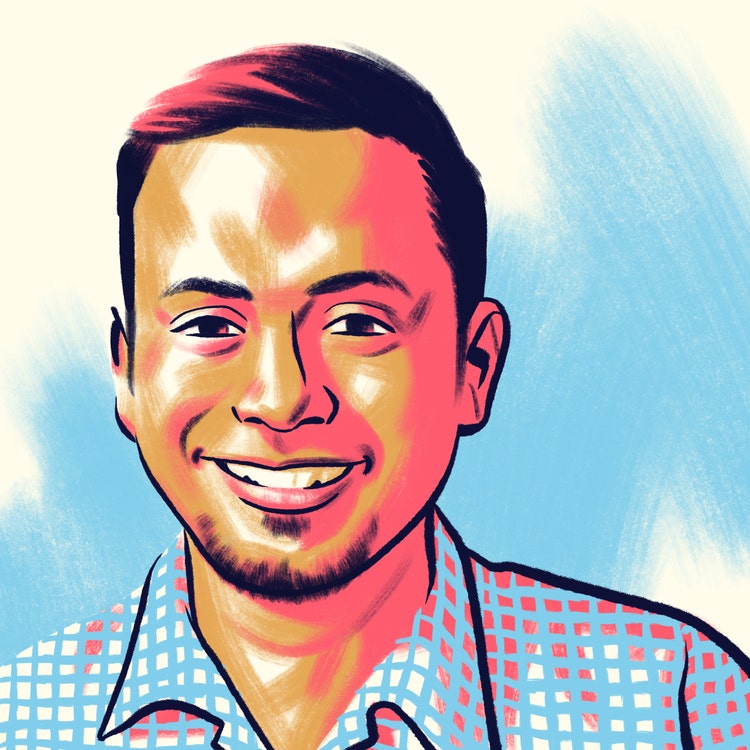Avirup Basu
Experience Designer, Fresco

Illustration by Michael Cho
How would you describe what you do to someone you’re sitting next to on a plane?
I think there have been quite a few conversations, not necessarily on a plane, that have unfolded in interesting ways, but the ideal explanation would be that I’m in a profession that helps create the tools that make our lives easier (and sometimes a bit annoying). Since I work for Adobe, dropping "Photoshop” helps people understand where I work but in India when I tell people I’m an experience designer they often mistake my profession as interior designer and ask me to whip up a mood board. And if I focus too much on the tech stuff, I worry that I might end up helping someone reset their Gmail password or something.
What is a project you’re most proud of?
Earlier in my career I worked for an organization that looked at the complex maze of healthcare systems in India from a holistic perspective. To elaborate a bit, we were helping design in-person hospital experiences, outpatient systems, and virtual consultations... and this was back in 2013 when access to smartphones and the Internet wasn’t as penetrative as it is today. This was also one of my first forays into experience design; looking at solutions sociologically, technologically, and with empathy was an education that still anchors my journey as a designer.
What has your career trajectory been? A straight shot? A maze of switchbacks? Or a knot you’ve untangled? Would you change the route?
It’s been close to ten years and a straight shot but with interesting detours. I was studying animation film design and was interning with studios as an assistant director. I eventually landed a job in a tech consultancy firm as a designer. I left abruptly when I was transferred to the financial systems team and switched to advertising to direct ad films, but the experience design bug had bitten. Looking at problems through a critical lens, going in depth to try to solve them, and learning something new and challenging every day far outweighed arbitrary design changes by clients.
What’s your process when you need to solve a big problem?
To be honest there’s really no set path for me, the process is really defined by the context of the problem, primarily from the perspective of who I am solving it for and who I am solving it with. Ideally my essential starting point is research. It’s engaging with the people that we are looking to solve this problem for pre-determining what the outcome should be and then validating the solution. I think a lot of good solutions come through when the research is solid. I also tend to move towards quick mockups, give a bit of flesh-and-blood to a solution, and then get them out to users for quick validation. In the end everyone loves a good story; I do sometimes look at solutions like that, like a product slowly reveals itself to excite us and fascinate us and then intrinsically it becomes a part of our lives. I would like to believe the people who designed them understood their user’s story.
Tell us about a dream project you’re working on currently or daydreaming about in your free time.
There are two: One is a neo-noir film set in Calcutta, my hometown. The other is creating a digital repository of tales from various parts of India and translating them across multiple languages to provide access to them across dialects. India is a fascinating amalgamation of people and experience so the stories would have elements of music and art and be told in a way that emphasizes the importance of language. Animosity can stem from a unidimensional understanding of history, so I want to find an engaging way for us to tell and hear each other’s stories. But I also do want to make that film one day.
Which living person do you most admire?
My list sometimes seems endless because of the talented people I come across who truly inspire me, but if I must choose just one, it would be Sarbajit Sen. He is an artist-activist and teacher based out of Calcutta who has done tremendous work highlighting the destruction of folk art across the eastern part of India, and how climate change has not only caused the decay of traditional artforms but has created severe consequences for artists’ livelihoods. He teaches us to be brave, to raise our voices through art, and by doing so has helped me understand the power of design.